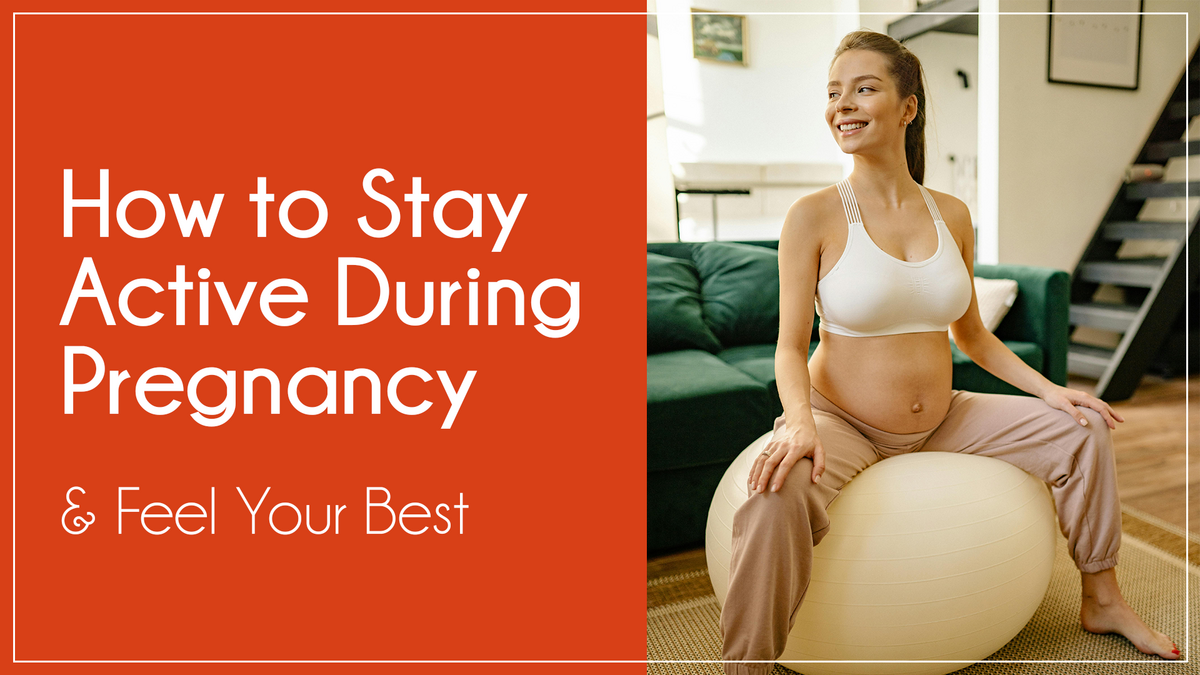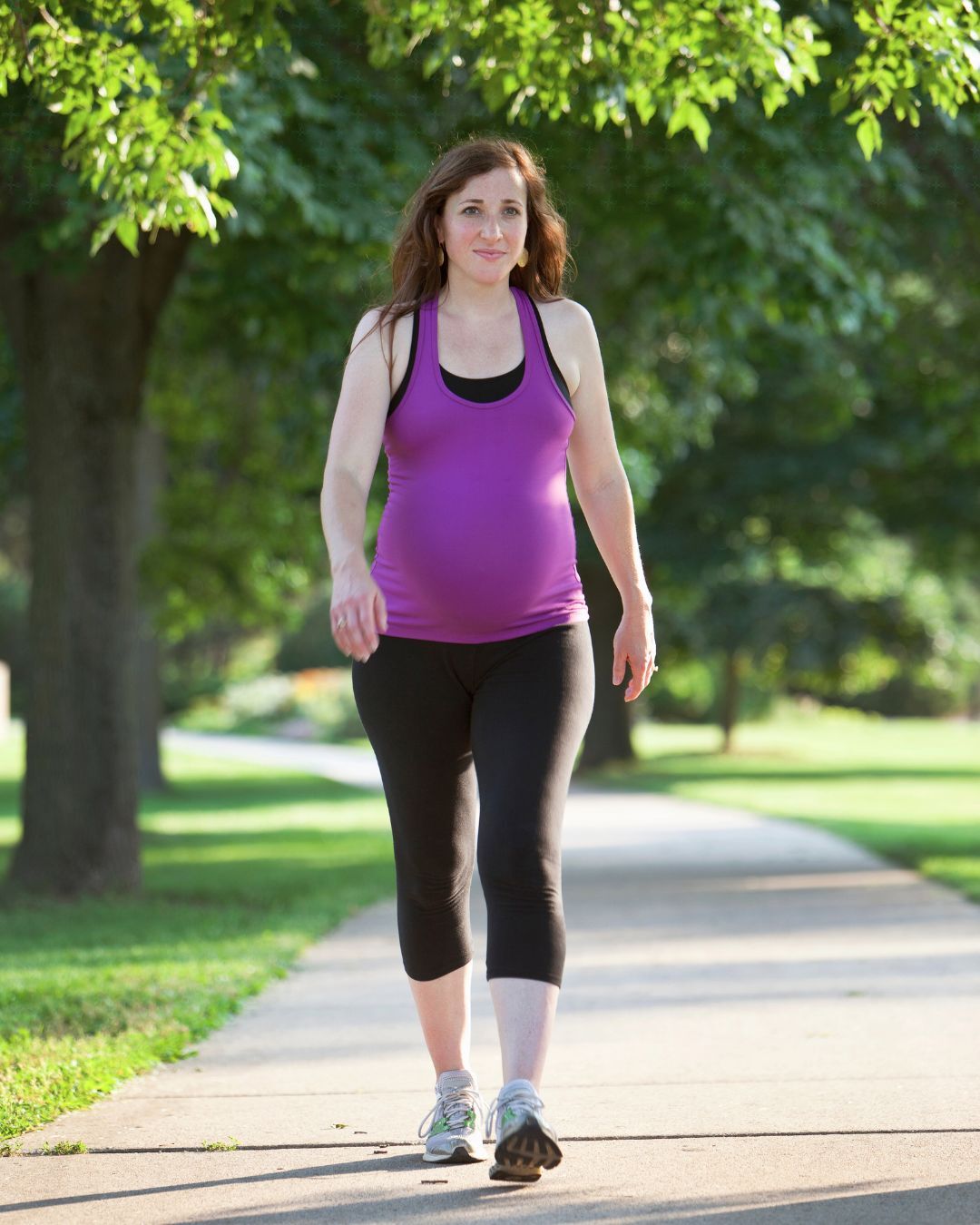How to Stay Active During Pregnancy and Feel Your Best

Ever have those days where even getting off the couch feels like a workout, and you’re left wondering what kind of movement is actually safe or worth the effort during pregnancy?
Between changing symptoms, shifting energy levels, and the avalanche of advice that comes from every direction, it can be hard to know what’s actually helpful.
One day you’re feeling strong and ready to move, and the next you’re not sure if a stretch or a nap is the better choice. And that’s okay, because movement during pregnancy isn’t about hitting a goal or sticking to a strict routine. It’s about tuning into what your body needs, honoring what it’s capable of, and building habits that support you physically and emotionally through every trimester.
Movement can ease discomfort, support your mental clarity, improve sleep, and even prepare your body for giving birth. Most importantly, it can help you feel more grounded and connected, like you’re caring for yourself on purpose.
In this article, you’ll find supportive, approachable ways to stay active that can help you feel stronger, more confident, and more at ease throughout pregnancy.

Why Movement Matters During Pregnancy
Your body is already doing something incredible: growing new life. But that doesn’t mean you have to press pause on taking care of yourself. In fact, movement can play a powerful role in helping you feel more comfortable, more energized, and more in tune with your changing body.
Physical Benefits for You and Baby
The physical perks of regular movement during pregnancy are well worth it. Gentle, consistent exercise can:
- Help reduce common discomforts like back pain, swelling, and fatigue
- Support better sleep and circulation
- Strengthen your core and pelvic muscles, which may make giving birth a little easier
As your baby grows, movement helps keep everything working more smoothly, supporting both your strength and your baby’s development.
Mental and Emotional Boosts
It’s not just your body that benefits. Moving with intention also supports your mind and heart. Pregnancy comes with big emotional shifts, and exercise helps by:
- Releasing feel-good endorphins that reduce stress and anxiety
- Encouraging a sense of emotional steadiness and inner calm
- Helping you stay connected to your body and develop a more positive self-image
These emotional boosts can be especially helpful when your usual routine feels out of sync or you’re adjusting to a new version of yourself.

Safe Pregnancy Exercises for Every Trimester
The type and intensity of movement you choose may shift throughout pregnancy, and that’s completely normal. What matters most is adapting to what feels right for your body as it changes week by week.
First Trimester Tips
In the early weeks, you might be navigating nausea, fatigue, or just the mental adjustment of being newly pregnant. Movement can still be part of your day with gentle options like:
- Walking or light jogging, if it feels good
- Prenatal yoga or slow stretching to ease tension
- Bodyweight exercises like squats or wall pushups for low-pressure strength work
Remember to stay hydrated and avoid overheating, especially if you’re exercising indoors or in warm weather.

Second Trimester Support
As energy levels often return in the second trimester, you may feel more able to add structure to your routine.
Safe and effective options include:
- Swimming or water aerobics, which relieve pressure on your joints
- Pelvic floor strengthening exercises like Kegels
- Modified strength training using light weights
- Posture-focused movements that help support your core and growing belly
This is a great time to integrate deeper core stability and breathing awareness into your practice.

Third Trimester Modifications
As your belly grows and your center of gravity shifts, comfort and safety take top priority. Movement should feel soothing and supportive, not strenuous.
Try:
- Continuing low-impact activities like walking, stretching, or swimming
- Practicing breathing and stretching techniques to prepare for birth
- Using props like yoga blocks or chairs for support and balance
Now’s also a great time to explore essential prenatal yoga poses by trimester to gently connect with your body and prepare mentally for birth.

Important Precautions and Modifications
Movement during pregnancy can be empowering, but it's important to stay aware of what types of activities are best avoided and when to seek guidance.
What to Avoid
While staying active is beneficial, there are certain exercises that are better left out during pregnancy, such as:
- High-impact or contact sports
- Lying flat on your back after the first trimester, which can restrict blood flow
- Movements that risk falling or loss of balance
- Overexertion. Use the “talk test” to make sure you can speak comfortably during activity
Listening to your body is always more important than pushing through discomfort.
When to Talk to Your Provider
Always reach out to your provider if you’re unsure about a workout or notice concerning symptoms. Specific times to consult a professional include:
- Experiencing spotting, dizziness, or unusual shortness of breath
- Navigating a high-risk pregnancy or medical condition
- Starting a new workout plan or increasing intensity
Your doula or provider can help you find a safe approach that fits your unique needs.
.jpg)
Creating a Pregnancy Movement Routine That Works for You
Consistency doesn’t have to mean intensity. The best routine is one that fits into your life and leaves you feeling more supported, not more stressed.
Tips for Staying Consistent
You don’t need a gym membership or hours of free time to make movement part of your pregnancy wellness. Start with:
- Short sessions, about 20–30 minutes most days
- Activities you genuinely enjoy and look forward to
- Pairing movement with routines you already have, like meditating or deep breathing afterward
Even small choices add up when they’re grounded in care.
Mix in Rest and Recovery
Recovery is part of movement too. Make space for rest, especially as your body demands more energy.
Support your recovery by:
- Prioritizing sleep and relaxing routines
- Incorporating gentle stretching after each workout
- Using foam rollers or warm baths to ease soreness
Balance is everything. Honor the need for both movement and stillness.

Building Confidence in Your Body’s Strength
Staying active is about more than exercise. It’s about reconnecting with your body, trusting what it’s capable of, and building confidence with every small step.
Trusting Your Instincts
There’s no perfect routine. There’s only what feels right for you.
Keep in mind:
- Every pregnancy looks and feels different
- Movement should energize you, not deplete you
- Small, consistent steps are more powerful than chasing perfection
When you move with mindfulness and kindness, you create space to feel strong and connected throughout pregnancy.
Embrace Movement and Confidence with Stork Helpers
Pregnancy is a time of transformation, and you're allowed to feel powerful through it. At Stork Helpers, we believe movement is part of holistic birth preparation, just like rest, nourishment, and mindset.
Our childbirth classes, birth doula services, and community resources are here to guide you through every phase of pregnancy with confidence and care. If you're looking for personalized support, practical advice, or someone to help you create a plan that fits your needs, we’re here for you.
Contact us today to learn how we can walk alongside you in pregnancy, birth, and beyond.
Follow Stork Helpers on Facebook, Instagram, and LinkedIn for more tips on postpartum, placenta encapsulation, and pregnancy guidance.
Happy with the difference Stork Helpers made in your pregnancy journey? Leave us a quick five-star review here!

